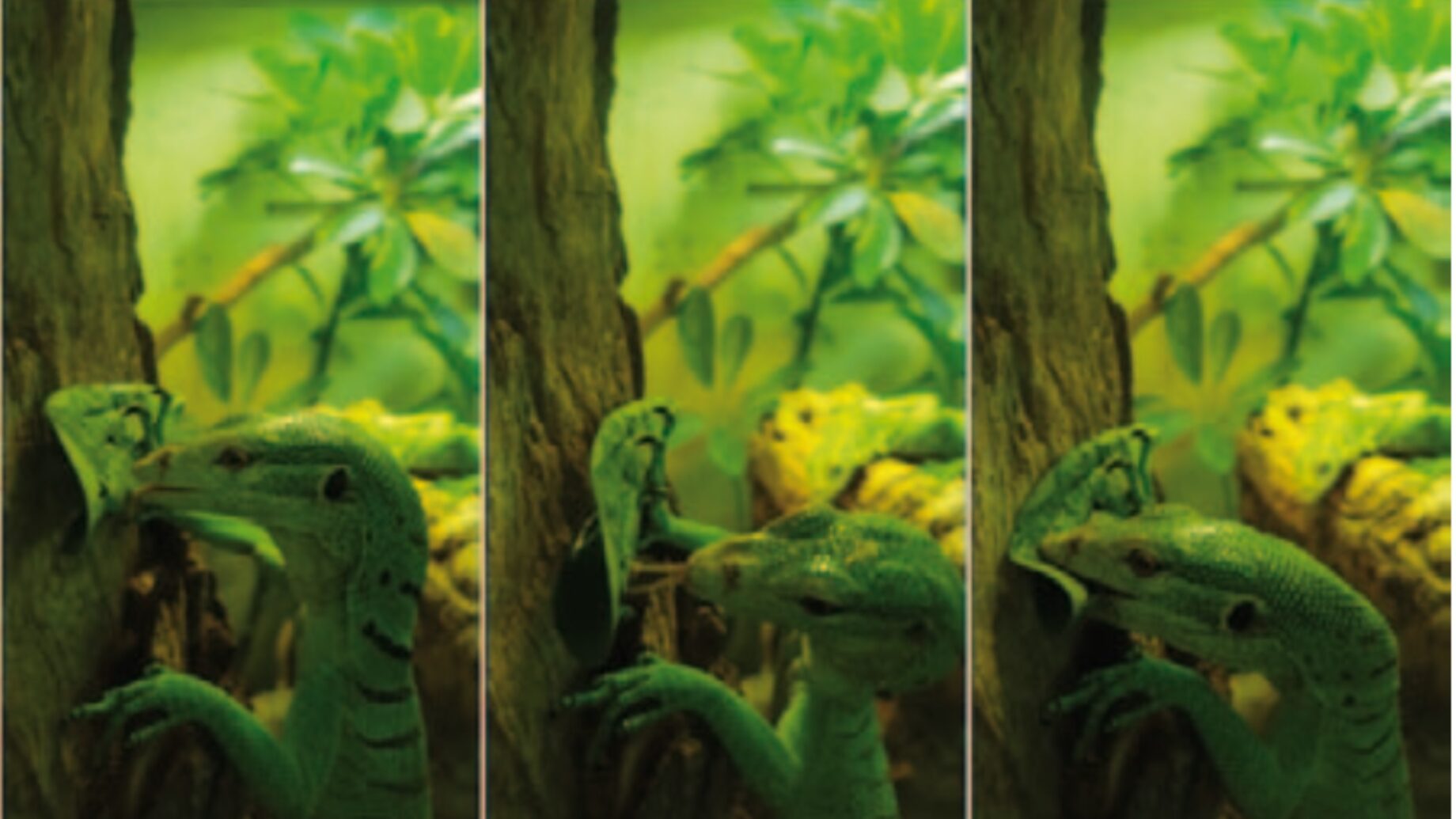Emeral tree monitor playing with a leaf
When it comes to animal intelligence, primates (including great apes), dolphins or crows and their relatives are the first that come to mind. Mammals and birds are also the most common subjects of scientific research on animal cognition. Other vertebrate groups, including reptiles, are much more rarely studied. However, they too can amaze. Such is the case with monitor lizards, sometimes called the primates of the squamate (lizard and snake) world.
What are monitor lizards?
The monitor lizard group consists of 83 species, including the largest of all lizards: the Komodo dragon. In the wild, monitor lizards can be found in Africa, Asia, Australia and Oceania. They can often be seen in zoos across the world, and are sometimes kept as pets.
Monitor lizards are active and have a very fast and energy-efficient metabolism, allowing them to move quickly for extended periods of time. Most are active predators (with the exception of three fruit-eating species). Sight and smell are their most important senses. For a lizard, monitors have a large brain.
Different species live in different environments and may differ in their cognitive abilities. The tests or observations described below were often carried out for a single species but it’s likely that the results can be extended to others.
Monitor lizards are considered to be curious and perceptive animals. They seem to be able to recognise different keepers in the zoo and can even count to six. Like virtually all animals, monitors learn to associate different environmental stimuli with threats or rewards. They can, for example, learn that certain toads are inedible or that food can be obtained by touching a white, but not a black, object. They can also be trained, for example, to walk to a target.
Solving puzzles
Several captive-born individuals from four species were subjected to a puzzle-box-opening test. Researchers placed the food in a transparent tube with a hinged door, and checked whether the lizards would be able to get to it. The first trials were not always successful, but after a few attempts, all the animals succeeded. Over time, the lizards were faster at getting to the food, indicating that they had learnt to cope effectively with the task.
Memory
Monitor lizards have also a good memory. Animals that learned to open the puzzle box still remembered how to do it after a 20-month break. On the first or second trial after the break, most of them were able to get to the food as fast as they did during their last attempts of the earlier sessions.
In the natural environment, memory is even more important than in the lab. For example, male desert monitors can remember the location of a female and return to the same spot the next day, travelling up to several hundred metres. They also travel a few kilometres each year from the territories where they spend most of the year to their wintering shelters.
Maps
Desert monitors can remember where females or resting sites are, but this does not mean that they have learned the routes by heart. Rather, they create a mental map of the area and can remember important locations in the context of various landmarks and other familiar places. When they return to a given location, they often use different but usually direct routes.
One desert monitor, which was released 2 km from its territory, kept moving in larger and larger circles in the vicinity of the release site. This behaviour is very similar to how experienced human navigators move in unfamiliar terrain. When at some point, the lizard climbed to the top of a ridge, it suddenly changed direction and headed straight towards ‘home’, suggesting recognition of some familiar place in the distance.
Play
Monitor lizards also seem to be able to play. Some individuals in the zoo pick up leaves, take them to their shelter or to a favourite branch and there tear them to pieces, using their mouth and front paws or by vigorously rubbing them against a stone or a tree. Once the leaf is in pieces, it’s not eaten or otherwise used, but simply replaced with a new one, and play continues. When a leaf by chance falls to the ground, the lizard quickly runs and picks it up. The tearing behaviour is reminiscent of the way monitor lizards handle their prey, but these animals do not eat plants and the behaviour is repeated at different times of the day, including after their meals. Foraging is therefore not the goal. Additionally, they perform these activities voluntarily, repeatedly, and do not seem stressed, a combination indicating playfulness.
But it is not only in captivity that monitor lizards behave as if they are playing. A yellow monitor was observed swimming a few times back and forth in the lake in a vertical position with pauses for rest (floating motionless on the surface). To observers, this behaviour looked like play.
These are just examples of the cognitive abilities of monitor lizards, as we actually still know very little about them. But one thing is clear: in captivity – whether in a zoo or at home – these lizards should be given adequate stimulation and enrichment.
Photo from the article “Play behaviour by captive tree monitors, Varanus macraei and Varanus prasinus“.

